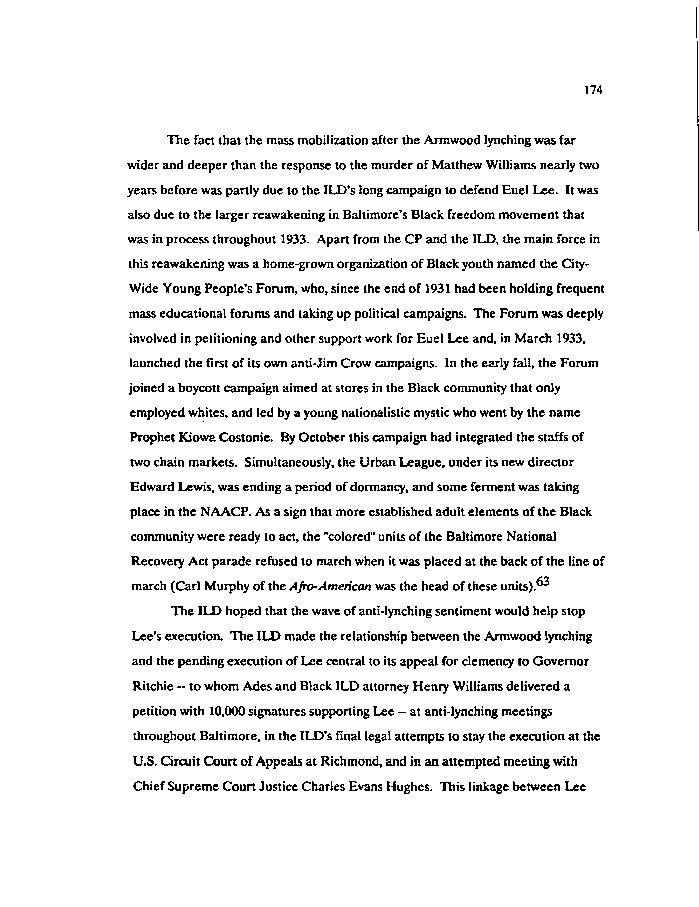|
174
The fact that the mass mobilization after the Armwood lynching was far
wider and deeper than the response to the murder of Matthew Williams nearly two
years before was partly due to the ILD's long campaign to defend Euel Lee. It was
also due to the larger reawakening in Baltimore's Black freedom movement that
was in process throughout 1933. Apart from the CP and the ILD, the main force in
this reawakening was a home-grown organization of Black youth named the City-
Wide Young People's Forum, who, since the end of 1931 had been holding frequent
mass educational forums and taking up political campaigns. The Forum was deeply
involved in petitioning and other support work for Euel Lee and, in March 1933,
launched the first of its own anti-Jim Crow campaigns. In the early fall, the Forum
joined a boycott campaign aimed at stores in the Black community that only
employed whites, and led by a young nationalistic mystic who went by the name
Prophet Kiowa Costonic. By October this campaign had integrated the staffs of
two chain markets. Simultaneously, the Urban League, under its new director
Edward Lewis, was ending a period of dormancy, and some ferment was taking
place in the NAACP. As a sign that more established adult elements of the Black
community were ready to act, the "colored" units of the Baltimore National
Recovery Act parade refused to march when it was placed at the back of the line of
march (Carl Murphy of the Afro-American was the head of these units).
The ILD hoped that the wave of ami-lynching sentiment would help stop
Lee's execution. The ILD made the relationship between the Armwood lynching
and the pending execution of Lee central to its appeal for clemency to Governor
Ritchie — to whom Ades and Black ILD attorney Henry Williams delivered a
petition with 10,000 signatures supporting Lee - at ami-lynching meetings
throughout Baltimore, in the ILD's final legal attempts to stay the execution at the
U.S. Circuit Court of Appeals at Richmond, and in an attempted meeting with
Chief Supreme Court Justice Charles Evans Hughes. This linkage between Lee
|

